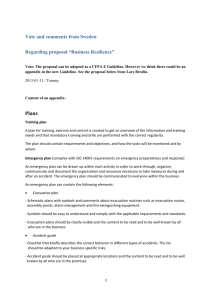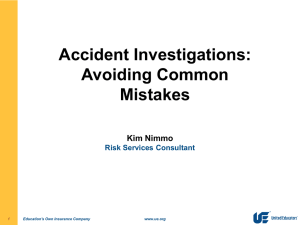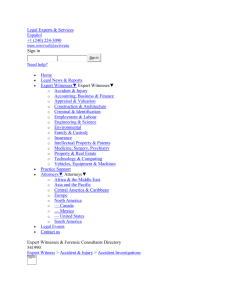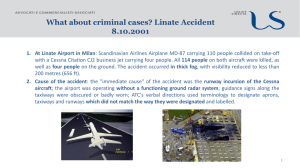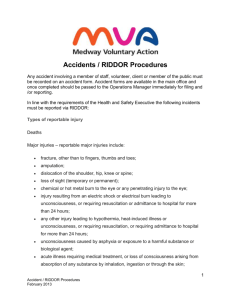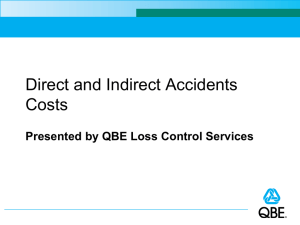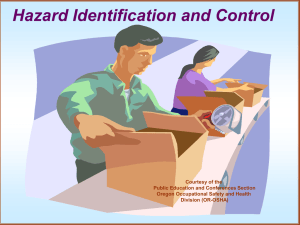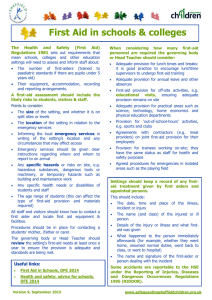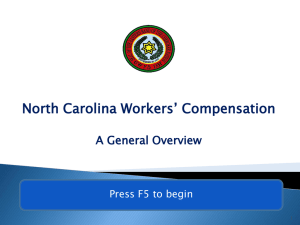Admin Revision 2 - Health & Safety
advertisement
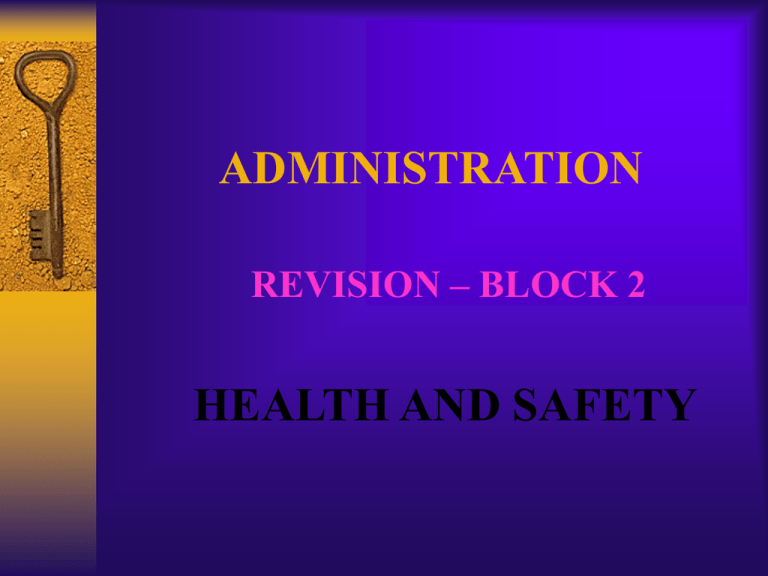
ADMINISTRATION REVISION – BLOCK 2 HEALTH AND SAFETY HEALTH AND SAFETY The Human Resources Department must ensure that all employees work in a safe and secure environment. Some common causes of accidents or injury: • slippery or damaged floor surfaces • poor lifting and carrying of heavy objects • badly stored items which fall or block passageways • use of computers for too long without breaks • badly positioned or badly filled filing cabinets • the use of chairs for standing on • badly maintained equipment • electrical faults • the careless use of cigarettes When accidents happen, and they will, procedures must be followed. SAFETY PROCEDURES Employees must be trained: • to use equipment properly • to lift objects properly • to act as first-aiders In the event of an accident the following should take place: • a first-aider should be called to tend to the victim • the names of witnesses to the accident must be noted • medical assistance should be called, if necessary • an accident report form must be completed • an entry should be made in the accident log book • if the cause of the accident needs to be put right, see that it is eg damaged flooring must be replaced FIRST AID If an accident happens in the workplace: • a trained first-aider should be sent for The first-aider should arrive with a first-aid box and will: • assess if an ambulance should be called for • talk calmly to the injured person to reassure them • give “first-aid” eg put the person into the recovery position • wait with the person until emergency service arrives • together with witnesses, complete an Accident Report Form The Accident Report Form will record: • name of injured person • description of injury • date of birth • first-aid given • job title • if sent to hospital/doctor • description of incident • name of witnesses • where it happened • job titles of witnesses LEGISLATION There are laws which lay down the minimum requirements with regard to health and safety in the workplace. Here are the main ones you should be able to recognise: • Health and Safety at Work Act (HASAW) 1974 • Health and Safety (First-Aid) Regulations 1981 • Health and Safety (Display Screen Equipment) 1992 • Reporting of Injuries, Diseases and Dangerous Occurrences Regulations (RIDDOR) 1995 The organisation which enforces the above legislation is the Health and Safety Executive (HSE) USING DISPLAY SCREEN EQUIPMENT Employees using computers long term, can suffer from: • RSI - repetitive strain injury to wrists • eye strain • headaches • back and neck problems • stress These can be avoided by: • regular breaks eg 5 minutes away from computer every hour • anti-glare filter screens or blinds • wrist supports • adjustable chairs • footrests • using the correct height of desk and chair • the correct lighting and noise levels • the appropriate training for the workload given • varying the work given EMERGENCY EVACUATION Some incidents require the workplace to be emptied of staff. This is referred to as an evacuation of the workplace. Evacuation normally happens in the event of: • a fire or fire drill • a suspicious parcel • a chemical spill • a gas leak All organisations draw up a set of procedures to be followed when the workplace is to be evacuated. All staff must be made aware of these procedures and must be given the chance to practice them. EQUIPMENT SAFETY Where staff must operate equipment, training must be given. This protects the operator and the equipment from damage. Office equipment for which training may be necessary: • Word Processor/Computer and appropriate software • Photocopier • Switchboard • Mail room equipment such as franking machine folding & inserting machine shredder • Fax machine Equipment must be regularly checked by qualified technicians. Faults in equipment must be reported according to procedures. Now answer the following questions in sentences on paper. 1 Which department is responsible for health and safety? 2 Why are procedures important when dealing with accidents? 3 What are some of the health problems associated with the use of ICT equipment? 4 What can be done to avoid ICT related health problems? 5 When an accident does happen, what details should be noted? 6 Where should the details of an accident be recorded? 7 What does HASAW stand for? 8 Why are first-aiders important in the workplace? 9 What do the RIDDOR regulations cover? 10 What is the name of the organisation which enforces health and safety legislation? Now check your answers with the solution and note your score.
